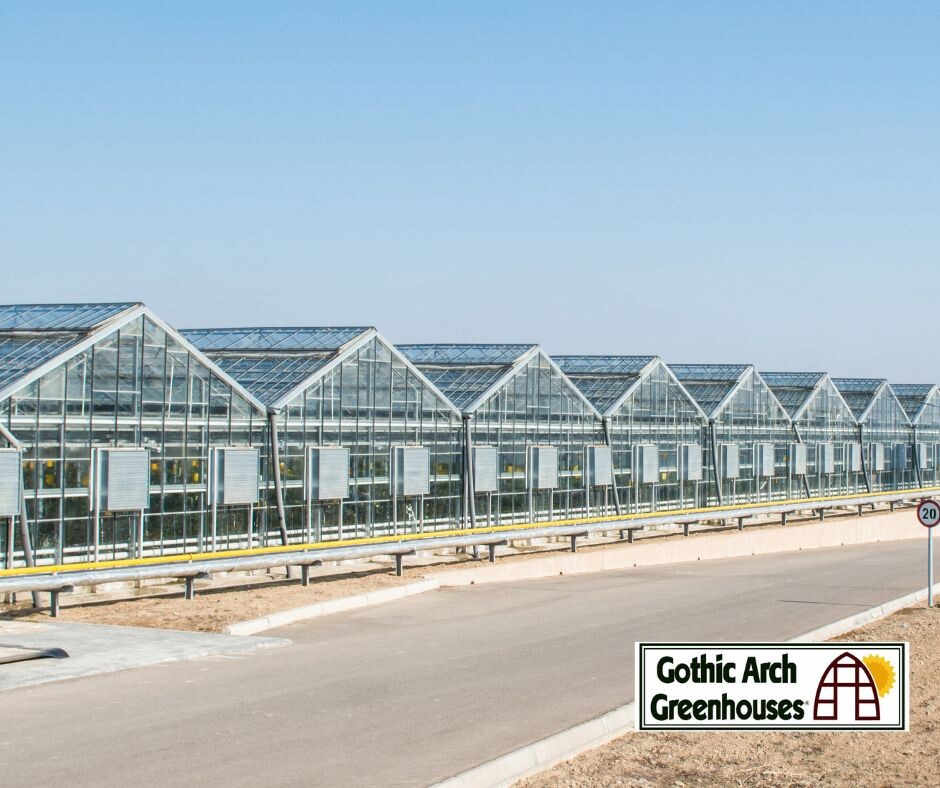
Selecting the best greenhouse covering for your operation means more than simply choosing among glass, fiberglass, polycarbonate or film—the most commonly used options. Choosing the best coverings for commercial greenhouses helps cut labor and energy costs.
While each choice offers advantages and disadvantages, understanding specifics about your local climate, your budget and your site will help most accurately determine the greenhouse covering that is suited for your needs.
Two more factors to take into account when evaluating the greenhouse covering itself are both the R-value and U-value. R-value is a measurement of the material’s insulating ability. In other words, the higher the value, the more it insulates. U-value is the measurement of heat loss. The lower the U-value, the less heat that is escaping the greenhouse.
In general, greenhouses in cooler climates benefit from twin-walled polycarbonate and Solexx coverings for their insulation properties and ability to withstand substantial snow loads. Warmer climates should avoid glass and single-walled or twin-walled polycarbonate, which easily overheat, and instead select plastic film coverings for their light diffusion qualities.
Glass Coverings for Commercial Greenhouses
Though expensive, glass greenhouse coverings are the most aesthetically pleasing. Available in single-pane and double-pane options, energy efficiency is one of the biggest concerns. Single-pane greenhouses aren’t recommended for northern growers because not only are they fragile, but also they have a low R-value (about 0.9). Double-pane structures can reduce energy costs (compared to single-pane) by half because they have a higher R-value (1.5 to 2.0). Often glass coverings are treated with a wash or film to help diffuse light and increase their insulation properties.
Fiberglass Coverings for Commercial Greenhouses
Strong and durable, fiberglass has an R-value similar to that of glass. If left untreated, UV rays can break down fiberglass panels, making them brittle and diminishing their efficiency. When the product is new, it can be strong and long-lasting, with some manufacturers offering a 10-year guarantee against yellowing and structural failure. Low R-value shows it provides insignificant insulation.
Polycarbonate Coverings for Commercial Greenhouses
Polycarbonate is available in corrugated and flat forms. Single, double or multi-wall thicknesses polycarbonate is stronger than fiberglass or acrylic and resistant to impact and fire. R-values range from around 1.5 up to 2.0 based on different thicknesses, so it offers slight light diffusion, but provides more insulation. Prized for its lightweight and durability, polycarbonate can last for years in an outdoor application. If cost is a concern, know that polycarbonate is one of the most expensive materials on the market. It also scratches easily, is difficult to cut and expensive to ship. Periodic cleaning with a soft cloth can help add to the longevity of polycarbonate greenhouse coverings and help keep them looking new.
Polyethylene Film Coverings for Commercial Greenhouses
The least expensive and most commonly used greenhouse covering in North America, polyethylene film is easy to install, but not as permanent as other greenhouse coverings. High quality films are typically available in one or two layers. Treating poly film with any of multiple coatings available may also provide added UV protection, thermal protection, anti-drip protection and protection from heat. Based on thickness, the R-value can range from 0.87 up to 1.7. Polyethylene film allows plants to breathe due to the porous or higher U-value of the material, but yields less heat loss than glass.
Solexx Coverings for Commercial Greenhouses
Experts highly recommend Solexx for its ability to diffuse light and its high R-value. This makes it easy to heat and cool. Solexx is similar to double-wall polycarbonate with a translucent tint. Available in thicknesses ranging from 3mm to 5mm, it comes in a variety of sizes. Solexx is flexible, so it can bend around corners and it is easy to cut. Engineered for prolonged outdoor use, this sturdy greenhouse covering is impact resistant as well. While Solexx is significantly more expensive than film, it costs less than polycarbonate.
Choosing the right greenhouse covering for your operation can make all the difference! If you have more questions and need more assistance making your selection, contact Gothic Arch Greenhouses at 1-800-531-4769 today!
